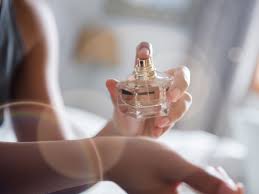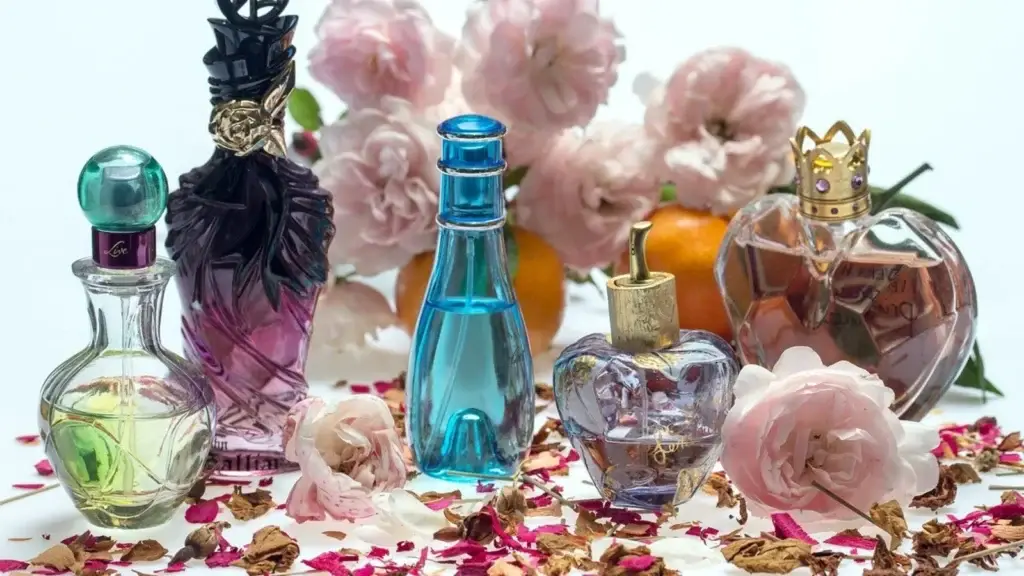Imagine walking into a room and leaving behind an invisible yet unforgettable trail—a signature essence that announces your presence. That’s the power of fragrance. But behind the magic of a well-crafted perfume lies a world of art and science. In this guide, we’ll explore the essentials of fragrance: notes, sillage, and longevity. By the end, you’ll appreciate perfumes on a whole new level.
The Building Blocks of Fragrance: Notes
Every perfume is made up of “notes”—the individual scents that make up the overall fragrance. These are layered into three main categories:

- Top Notes
The first impression matters, and that’s exactly what top notes are. These light and refreshing scents capture your attention but typically evaporate quickly, lasting about 5-15 minutes. Think citrusy bursts of lemon, zesty bergamot, or the sweetness of lavender.
- Middle notes
As these top notes disappear, the middle or heart of the fragrance unfolds. Heart, the middle notes, are what give a perfume its character and persist throughout several hours. Imagine an aromatic bouquet of roses or jasmine in bloom—these floral or fruity elements often dominate the heart.
- Base Notes
Base notes are finally the deep, lasting smells that come about as the perfume dries down. Rich, warm, or woody fragrances of vanilla, amber, or sandalwood can linger for hours; sometimes, it lingers all day.
The Trail You Leave Behind: Sillage
You ever walked by someone and picked up a whiff of their perfume even though they have passed you by? That’s called sillage. It is the French word meaning “trail,” referring to how far a scent projects off a person.

- Close to the Skin
Some scents are reserved; they remain very close to the skin. Such fragrances are ideal for very intimate situations or when you prefer a private smell that only the people around you can notice.
- Balancing Sillage
Fragrances with balanced sillage are apparent but not strong, hence for most social settings. - Sillage Room-Fillers
For those bold scents that command attention and draw people to notice your arrival long before you get into the room, special events or to really make a big impression, strong sillage perfumes will surely do.
Sillage is affected not only by the perfume but also by factors such as application technique and environment. Applying fragrance to pulse points—such as your wrists and neck—can enhance projection.
How Long Does It Last? Understanding Longevity

A perfume’s longevity is how long it lasts on your skin before fading. This depends on the perfume’s concentration and your skin type.
- Fragrance Concentrations
Perfumes come in different concentrations, which affect their longevity and strength:
Concentrated Parfum (Extrait de Parfum): holds the longest between 8 and 12 hours or even beyond.
Eau de Parfum (EDP): one notch down and holds between 6 and 8 hours
Eau de Toilette: less concentrated-holds between 4 and 6 hours.
Eau de Cologne: Least concentrated- keeps between 2 and 3 hours
Skin Chemistry
The natural chemistry of your skin determines how a fragrance will perform. Oily skin retains fragrances longer, whereas dry skin tends to dissipate them quickly. Applying an unscented moisturizer before perfume can help them last longer.
- Environmental Factors
For instance, hot and humid weather increases the strength of a fragrance; it will dissipate faster when the climate is cooler. Application to clothing or hair also gives a perfume longer life, provided that the perfume does not ruin or stain fabrics.
Tips to Get the Best Out of Your Fragrance

Now that you know the principle of notes, sillage, and longevity, here are a few practical tips:
Layer Your Scent: Apply matching scented body lotions or shower gels for a perfumed overlap.
Do not Rub: Avoid rubbing your wrists together after having applied perfume; it breaks down the molecules of the fragrance.
Spray Strategically: Try spraying a little on your hair or clothing, pulse points include the neck, wrists, or behind the ears.
Store Properly: Store perfumes in a cool, dark place to preserve their quality.
Experiment: Use various fragrance families and layering combinations to build your personal scents.
Emotional Connection
Fragrance is more than a smell, it is the experience. One can be moved emotionally by memories connected to it or enhance his moods, character, and person. A swish of fragrance can bring about a happy recollection, send you memories to a dear and loved one or give you courage to face and conquer the world.
Think for a moment of the last time a scent stayed with you. Was it a floral perfume that reminds you of your grandmother’s garden or perhaps a smoky, woody scent that transports you to a spirit of adventure? For fragrance as an art form, these connections make it intensely personal and potent.
Final Thoughts
It is by understanding the terms of notes, sillage, and longevity that one appreciates the complexities of fragrances. Whether a perfume aficionado or a novice, these are elements that can provide a base to explore the vast and rich world of fragrances.
The next time you spritz on your favorite perfume, savor its journey—from the bright spark of the top notes to the lingering warmth of the base notes. Your fragrance is more than just a scent; it’s a story waiting to be told.
